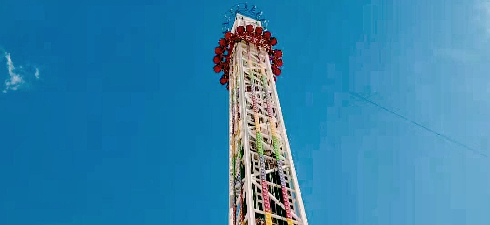- Albanian
- Arabic
- Belarusian
- Bengali
- Czech
- English
- French
- German
- Hebrew
- Hungarian
- Indonesian
- irish
- Italian
- Japanese
- kazakh
- Persian
- Russian
- Thai
- Uzbek
- Vietnamese
Easy Roller Coaster Drawing Tutorial for Beginners and Enthusiasts
The Joy of Roller Coaster Sketching
Roller coasters have long been an emblem of thrill and excitement, drawing crowds to amusement parks worldwide. With their towering heights, dizzying loops, and gravity-defying drops, these rides offer an adrenaline rush that is hard to match. But beyond the screams and laughter, the art of roller coaster sketching opens up a realm of creativity that invites enthusiasts to capture the essence of these mechanical marvels on paper.
Sketching a roller coaster can be an exhilarating experience in itself. It allows artists—whether experienced or novices—to interpret the intricacies and dynamics of these rides from their own perspectives. To embark on this artistic journey, one doesn't need to be a master artist; simple techniques can lead to remarkable renditions of these thrill-inducing structures.
To begin with, gather your supplies. A sketchbook, a few pencils of varying hardness (from H to B), and, if desired, some colored pencils or markers are all you need. Once you're equipped, it's essential to study the specific roller coaster you want to sketch. If you're recreating a coaster from an amusement park, take a few moments to observe its features the steep inclines, the twists and turns, and any unique elements like loops, corkscrews, or themed designs.
Start with the basic structure. Lightly sketch out the main elements of the coaster's track—remember, it doesn't have to be perfect. Focus on creating smooth curves for the track and gentle slopes that mirror the ride's real trajectory. It's crucial to capture the dynamic flow of the coaster, as this energy is what transforms a static image into a representation of motion and excitement.
roller coaster sketch easy

Once you have the outline, add the supporting structures like columns and braces. These elements provide depth and dimension to your drawing. Pay close attention to the scale and perspective to ensure that your roller coaster appears realistic. Adding small details, like the carriages, riders’ joyful expressions, and even the park scenery, can bring your sketch to life.
Shading is another vital aspect of sketching. Using softer pencils (like 2B or 4B) can help you create shadow effects, giving the roller coaster a three-dimensional quality. Consider the light source; it could be the sun or artificial lights from the amusement park. Shade accordingly to create contrast and highlight the structure's curves and angles.
If you wish to take your sketch a step further, adding color can enhance its vibrancy. Roller coasters often feature bright colors that draw attention and evoke a sense of fun. Use markers or colored pencils to fill in the track and support structures, making sure to blend colors for a more realistic effect. The riders can be filled with a variety of skin tones and clothing colors to reflect diversity and excitement.
Finally, step back to assess your work. Look for areas that may need more detail or adjustments. It’s important to remember that art is subjective; what matters most is that you’ve enjoyed the process of creating your roller coaster sketch. Whether you admire it yourself or share it with friends, your unique interpretation captures your personal experience with the thrill of roller coasters.
In conclusion, roller coaster sketching serves as a delightful blend of artistry and passion. It allows us not just to appreciate the engineering marvels that delight millions but also to express our creativity through lines and colors. So, grab your sketchbook and let your imagination soar as you depict the thrilling world of roller coasters! Whether it’s the graceful arcs or the nail-biting drops, each sketch carries the spirit of adventure that defines these iconic rides.
-
Flume Ride-Hebei Zhipao Amusement Equipment Manufacturing Co., Ltd.|Thrilling Water Attraction&Customizable DesignJul.30,2025
-
Flume Ride - Hebei Zhipao Amusement Equipment | Water Coaster, Thrilling DescentJul.30,2025
-
Flume Ride - Hebei Zhipao | Thrilling Water AttractionJul.30,2025
-
Flume Ride: Thrilling Water Attraction by Hebei Zhipao|Log Flume Manufacturers&Flume Ride DesignJul.30,2025
-
Flume Ride-Hebei Zhipao Amusement Equipment Manufacturing Co., Ltd.|Thrilling Water Coaster, Safe DesignJul.30,2025
-
Flume Ride-Hebei Zhipao Amusement Equipment Manufacturing Co., Ltd.|Thrilling Water Attraction, Safe DesignJul.30,2025
